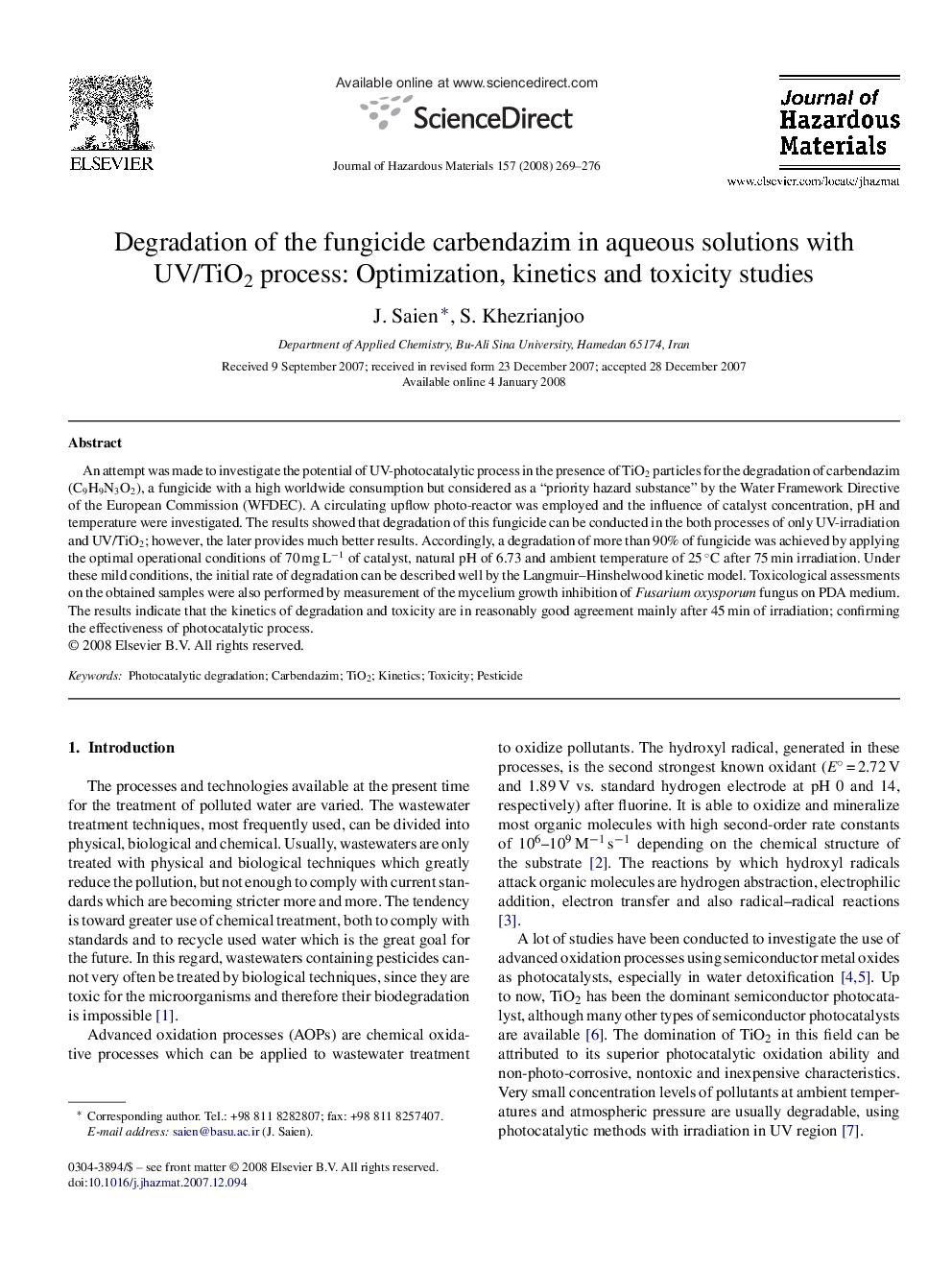| Article ID | Journal | Published Year | Pages | File Type |
|---|---|---|---|---|
| 582879 | Journal of Hazardous Materials | 2008 | 8 Pages |
Abstract
An attempt was made to investigate the potential of UV-photocatalytic process in the presence of TiO2 particles for the degradation of carbendazim (C9H9N3O2), a fungicide with a high worldwide consumption but considered as a “priority hazard substance” by the Water Framework Directive of the European Commission (WFDEC). A circulating upflow photo-reactor was employed and the influence of catalyst concentration, pH and temperature were investigated. The results showed that degradation of this fungicide can be conducted in the both processes of only UV-irradiation and UV/TiO2; however, the later provides much better results. Accordingly, a degradation of more than 90% of fungicide was achieved by applying the optimal operational conditions of 70 mg Lâ1 of catalyst, natural pH of 6.73 and ambient temperature of 25 °C after 75 min irradiation. Under these mild conditions, the initial rate of degradation can be described well by the Langmuir-Hinshelwood kinetic model. Toxicological assessments on the obtained samples were also performed by measurement of the mycelium growth inhibition of Fusarium oxysporum fungus on PDA medium. The results indicate that the kinetics of degradation and toxicity are in reasonably good agreement mainly after 45 min of irradiation; confirming the effectiveness of photocatalytic process.
Related Topics
Physical Sciences and Engineering
Chemical Engineering
Chemical Health and Safety
Authors
J. Saien, S. Khezrianjoo,
